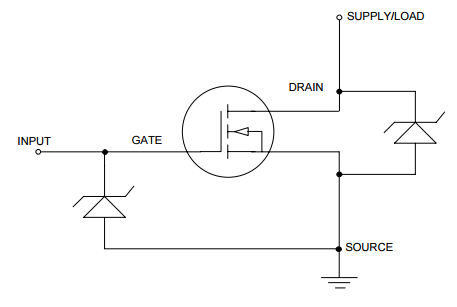I'm using this depletion-mode MOSFET in a high-voltage power-management circuit. My 500V DC supply isn't high grade, and now that I've blown two of these MOSFETs (gate shorts to drain) I'm wondering if I can put any components on either side to protect it? I was getting weird results with the first one before realizing it was blown. I might have blown the second one (not sure at which point in my testing it failed) simply by turning the high-voltage supply on with it wired like this:

simulate this circuit – Schematic created using CircuitLab
For protection purposes: If it simplifies things I never want to see more than 200mA through the circuit. If no better ideas I guess I could put a fast-blow fuse in front of V+? But I'm not sure if that's the only thing that can blow this MOSFET. E.g., I'm beginning to wonder if having no load on the drain can cause problems.



